Noor Inayat Khan: Indian spy princess gets blue plaque
- Published
- comments
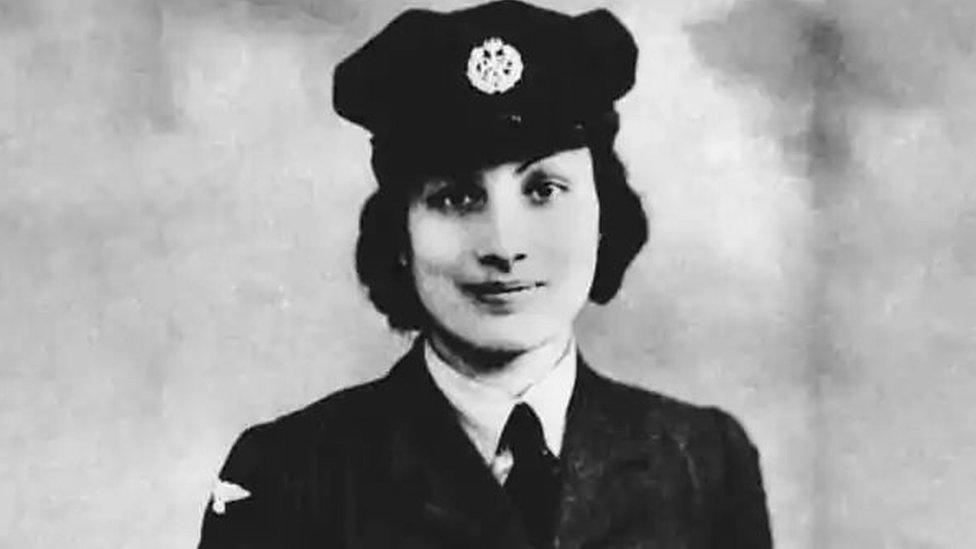
A blue plaque is being added to the house in Bloomsbury in London, where World War II spy Noor Inayat Khan once lived with her family.
Blue plaques are used to show connection between a place and a famous person or event, and this is the first one to honour a woman of Indian origin.
She served in the Special Operations Executive (SOE), a secret organisation set up by the British government which sent spies into countries invaded by Germany, to try and help people living under Nazi occupation there.
Noor worked as a secret agent in Paris and is thought to be Britain's first Muslim war heroine in Europe.
She was captured by the German secret police called the Gestapo, and died in September 1944 at Dachau concentration camp.
Nazis is the shortened name for the National Socialist German Workers' Party (NSDAP), led by a man called Adolf Hitler.
The Nazi party was a political party in Germany established in 1919 in the aftermath of World War One.
They believed that Germany was a better country than others and that their people's superiority meant they could, and should, dominate other people. This led Germany to invade and take over other countries before, and during, World War Two.
How did Noor become a secret agent?
Noor was born in Moscow in 1914 to an Indian father and an American mother.
She was a member of the Indian Royal Family, and lived with her family in London and Paris.
Noor's father died when she was 13, so she helped to look after her mother, and brothers and sisters.
She was passionate about music and began writing children's stories, which were published in France, America and the UK.
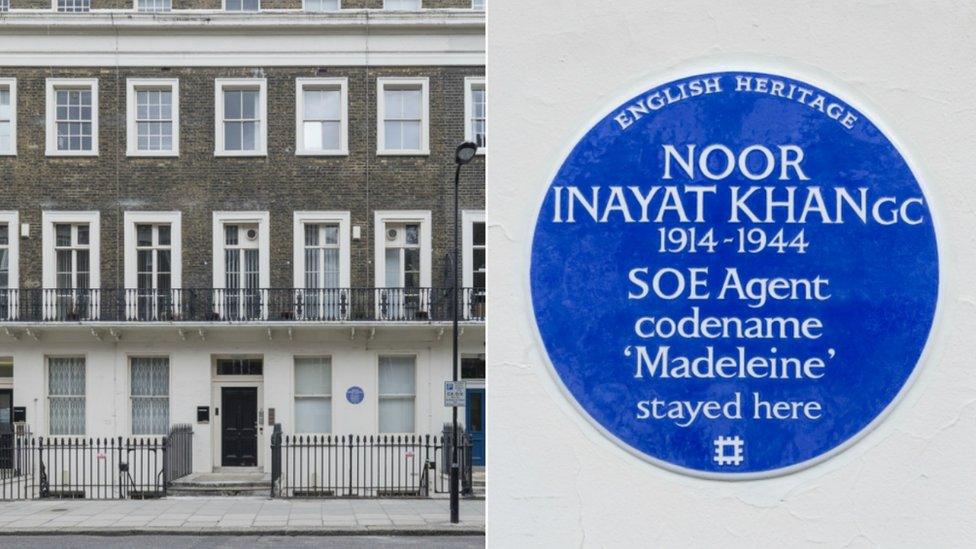
After Nazi Germany took over France, Noor and her family escaped to England and in November 1940 she joined the WAAF (Women's Auxiliary Air Force).
In late 1942, she was recruited to join SOE as a radio operator.
SEO agents were trained to fight, use radio and telegraph communication, and to disrupt the enemies' plans.
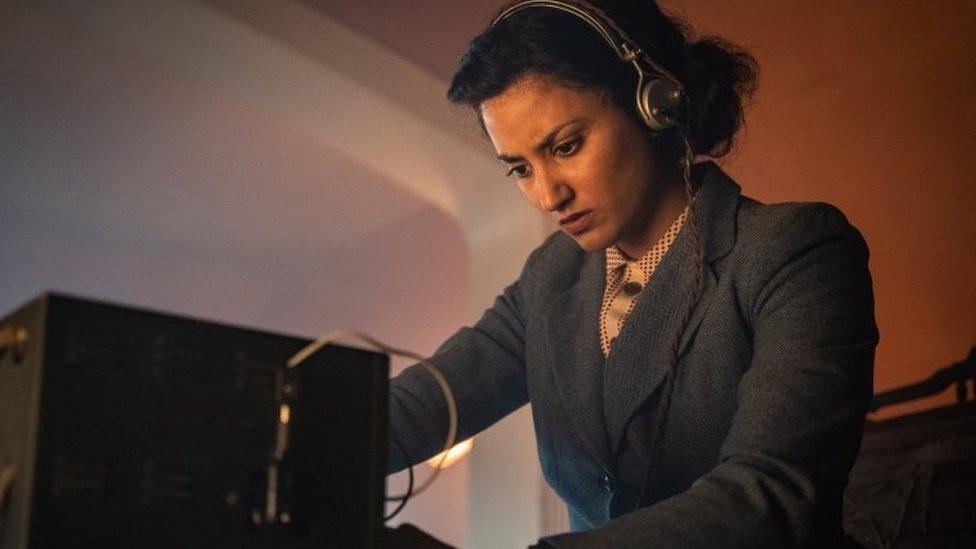
In January, Noor's character appeared in an episode of Doctor Who called Spyfall, played by actress Aurora Marion
Often they had secret gadgets and weapons, for example an exploding pen and weapons hidden in everyday objects like umbrellas and pipes, which became the inspiration for many of the secret gadgets seen in James Bond films.
Their missions were often very dangerous and many knew they would probably never return home, but accepted the risk.
Noor's job was to send secret messages back to London, one of the most dangerous jobs of all.
But she risked her life to go behind enemy lines and was parachuted into occupied France.
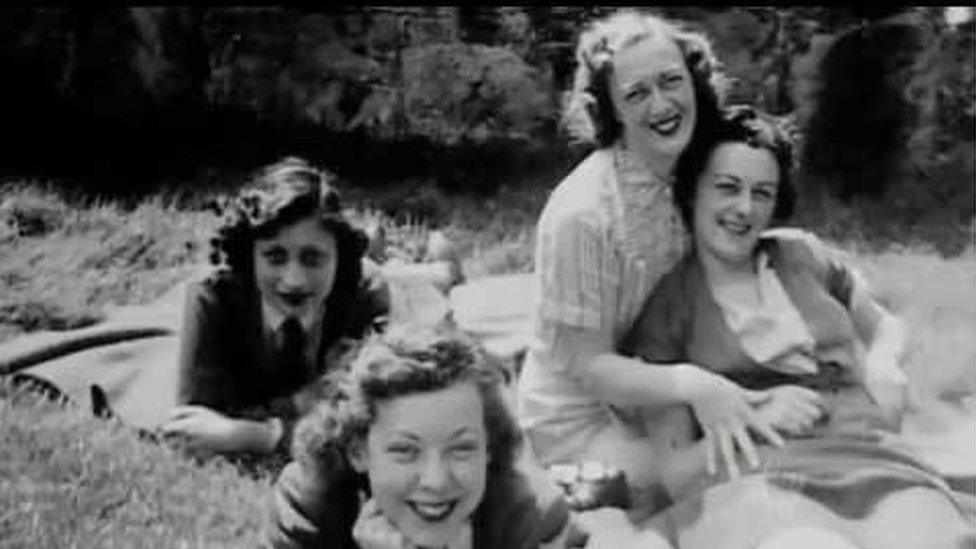
Many of Noor's fellow agents didn't even know her real name, instead calling her Nora Baker
She used the codename 'Madeleine', and joined hundred of other agents already in place.
Although many members of her SEO network were arrested shortly after she arrived, Noor chose to remain in France, moving from place to place and trying to send messages back to London while avoiding capture.
But she was caught while still working on her first mission. Although she escaped from prison, she was recaptured a few hours later.
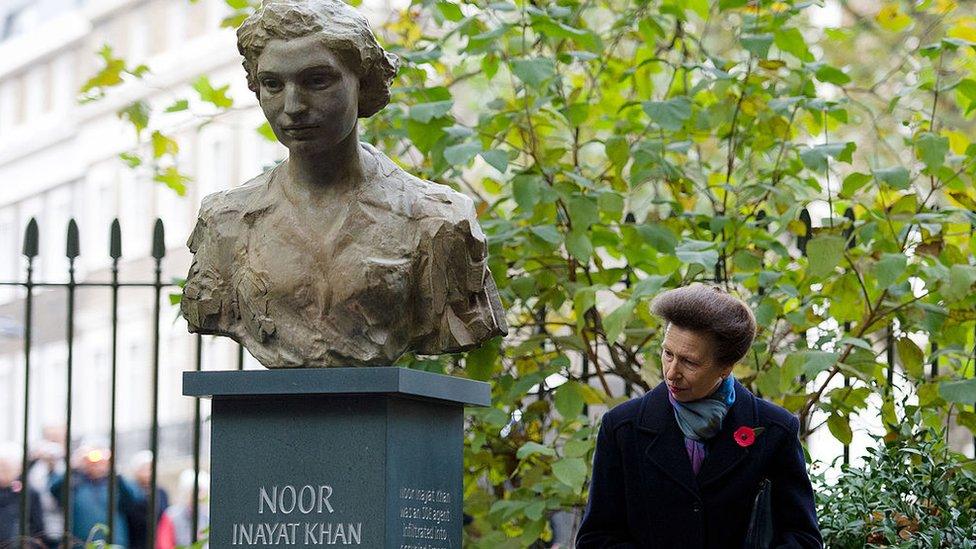
A memorial to Noor was put up in London square in 2012
Along with three other agents Noor was taken to a concentrations camp. Even though she was starved for almost a year by the German guards, she refused to reveal any secrets.
Noor was awarded the George Cross medal for her bravery - only one of only three women in World War II to receive it.
- Published15 October 2020
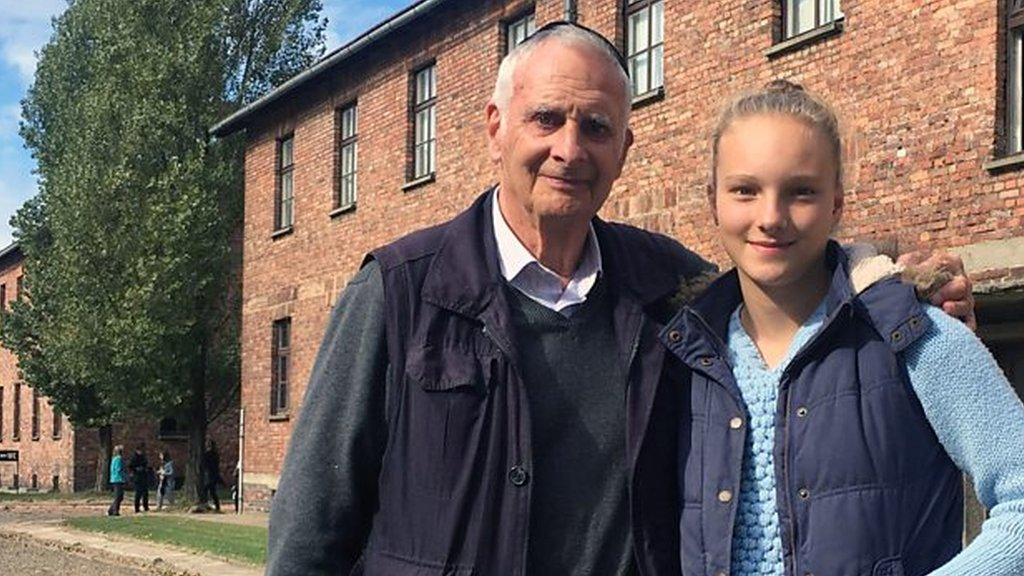
- Published21 January
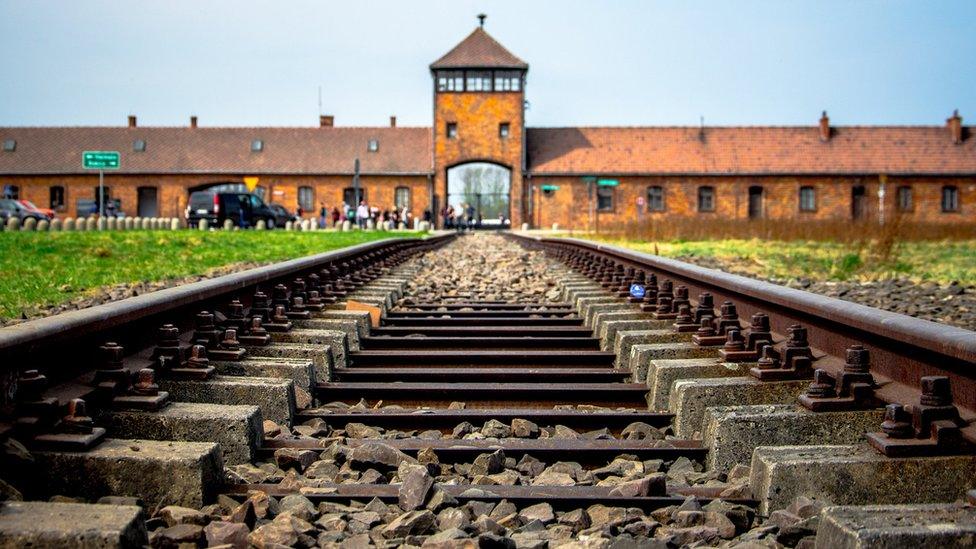
- Published7 November 2013

